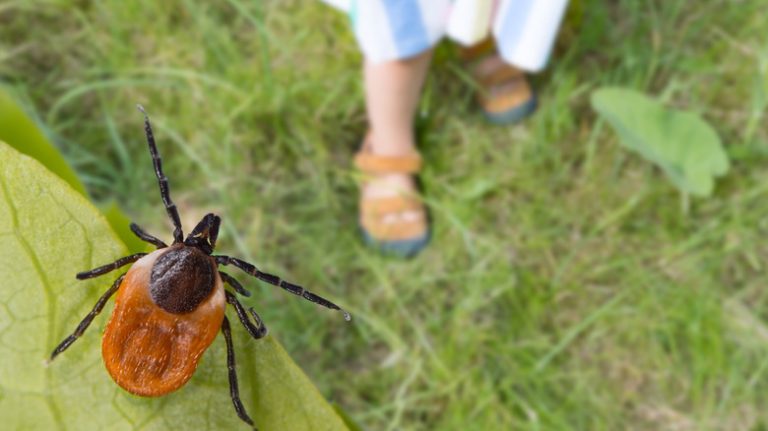Deadheading is a term that every gardener should know if they want to enjoy more blooms. But why is deadheading so important, and how do you go about doing it? Let’s find out!
Deadheading is the simple process of removing the faded or dead flowers from a plant. By doing this, you encourage more flowers to bloom, because the plant no longer needs to focus its energy on producing seeds. Instead, it can redirect that energy towards new growth and additional blooms.
For example, if you have an annual like marigolds or black-eyed Susans, regularly deadheading the fading blooms will help to control their spread and encourage more flowers to form. With a simple pinch of your fingers or a pair of gardening gloves, you can remove the spent flowers and enjoy a full and vibrant display.
It’s important to note that not all plants require deadheading. Some perennials, bulbs, and even some annuals will drop their seeds and spread on their own without any help. In fact, some plants, like bee balm, may even self-seed and form mulitple heads, adding to their beauty. However, if you want to keep these plants looking their best, deadheading them is always a good habit to follow.
So, when should you deadhead? The general rule of thumb is to remove the faded blossoms as soon as they begin to decline. This will prevent the plant from wasting energy on developing seed pods and instead encourage it to use that energy for new growth.
In conclusion, deadheading is a simple and incredibly effective way to keep your plants blooming big. By removing faded flowers, you not only control the spread of the plant, but you also encourage more blooms to form. So grab your gloves or use your fingers, and start deadheading to enjoy a better and more beautiful garden!
How to Deadhead Flowers
Deadheading flowers is an essential practice for any gardener looking to keep their plants blooming big and beautiful. By removing spent flowers, you encourage the plant to continue producing new blooms, prolonging the flowering period and ensuring a more vibrant display in your garden.
Deadheading is a simple process that involves removing the faded or “dead” flowers from the plant. This helps redirect energy towards new growth rather than producing seeds. To deadhead flowers, follow these easy steps:
| Step 1: | Begin by locating the spent flowers amid the healthy blooms. You can easily identify them by their withered appearance. |
| Step 2: | Using your fingers or a pair of sharp pruning shears, cut off the stems of the spent flowers, removing them from the plant. |
| Step 3: | In order to promote new growth, it is important to deadhead flowers as soon as they begin to fade. This will help prevent the plant from wasting energy on seed formation. |
| Step 4: | Some flowers, like zinnias and marigolds, can be deadheaded simply by pinching off the faded flowers with your fingers. If the flower has already dropped its seeds, you can still deadhead it to encourage more blooms. |
| Step 5: | Repeat the deadheading process regularly throughout the summer to keep your flowers looking their best. This will help maintain the plant’s overall health and vigor. |
Deadheading flowers is a secret technique that many experienced gardeners use to keep their plants blooming beautifully all season long. By removing spent flowers, you not only prevent the plant from going to seed, but you also promote more vigorous growth and longer-lasting blooms.
Zinnias, for example, are known to perform incredibly well when deadheaded. Leaving faded flowers on the plant not only compromises their appearance but also reduces the overall blooming span. By consistently removing spent blooms, you can enjoy a continuous display of vibrant flowers throughout the summer.
Another example is gaillardia, an annual flower that forms a habit of winter seed formation if not deadheaded. By taking a few moments to deadhead gaillardia, you can ensure that the plant continues to bloom and doesn’t waste energy on setting seeds.
Deadheading flowers is a simple but important task that can make a big difference in the overall performance of your garden. Not only will it keep your flowers looking beautiful, but it will also help them stay healthy and blooming for much longer.
So, always remember the secret to keeping your plants blooming big is to deadhead the flowers!
Deadheading Tips
Deadheading is the process of removing faded or dying flowers from plants. It is a simple and effective technique that can significantly improve the appearance and health of your flowers. Here are some tips to help you deadhead your plants:
- Find the flowers that need to be deadheaded. Look for single flowers that have begun to fade or develop seed pods.
- Pinched or remove the faded flowers. You can do this by pinching the stem just above the first set of leaves or by using a pair of clean scissors to cut the stem.
- Be sure to deadhead regularly. Deadheading should be done once or twice a week throughout the flowering season to keep your plants blooming big.
- Remove the entire flower head. When deadheading, it is important to remove the entire flower head, including any developing seed pods. This will prevent the plant from going to seed and encourage it to produce more flowers.
- Use your fingers for single flowers and scissors for multiple flowers. For single-flowered plants like black-eyed Susans, you can simply pinch off the faded flowers with your fingers. For plants with multiple flowers on each stem, like coreopsis, it may be easier to use a pair of scissors to remove the entire flower head.
- Look for signs of disease or pests. While deadheading, take a close look at the flowers and foliage for any signs of disease or pests. Remove any affected flowers or foliage to prevent the spread of disease.
- Consider the benefits of deadheading. Deadheading not only keeps your plants looking tidy and neat, but it also helps to control the spread of weeds. Additionally, removing faded flowers can redirect the plant’s energy towards producing new growth and keep them blooming longer.
- Prune back plants with woody stems. Some plants, like phlox, have woody stems that can be pruned back to the base of the plant once the flowering is finished.
- Don’t forget about bulbs. Deadheading is not just for flowering plants. It can also benefit bulbs by preventing them from forming seed pods and redirecting energy into bulb production.
- Understand the term “deadheading”. The term “deadheading” is related to the phrase “heading” or “heading off” which means preventing the formation of seed heads.
By following these deadheading tips, you can keep your plants blooming big and beautiful all season long.
Related Tips
- When deadheading flowers, it is important to remove the fading blooms to encourage new growth. This helps the plant continue to flourish.
- One simple thing you can do to keep your plants blooming big is to spend some time deadheading. By pinching off the spent flowers with your thumb and forefinger, you are removing the decomposing plant material and allowing the plants to focus their resources on producing new blooms.
- Deadheading is especially important for perennial plants, such as coreopsis and gaillardia, as it helps to prolong their flowering period. By removing the spent blooms, you are encouraging the plants to continue producing new flowers throughout the summer.
- If you leave the faded flowers on the plant, they may produce seeds. While this may not be a problem for some gardeners, it can be detrimental to those who want their plants to focus on flower production rather than seed production.
- Bedding plants, such as balm and gaillardia, can benefit greatly from deadheading. By removing the old flowers, you are encouraging new growth and preventing the plants from becoming leggy or forming seed heads too early in the season.
- Deadheading is a simple task that can be done throughout the growing season. You can deadhead your plants as often as needed to keep them looking their best.
- Wearing gloves while deadheading can help protect your hands from thorns or other potential injury.
- For the most part, deadheading involves simply removing the faded flowers. However, there are some plants that may require more specific deadheading techniques, such as cutting back to a specific set of leaves or removing the entire flower stalk.
- If you’re not sure what deadheading method is best for your plants, consult a gardening guide or ask a knowledgeable gardener for advice.
- Some plants, like coreopsis, may benefit from a final deadheading in early fall. This helps to tidy up the plants before winter and can encourage a small flush of flowers before the plants go dormant.
- Remember that deadheading is not the only answer to keeping your plants blooming big. It is also important to provide them with proper care, including regular watering, fertilizing, and pest control.
- Enjoy the process of deadheading – it can be a mindful and relaxing activity that allows you to connect with your plants and better understand their needs.
How To Deadhead Flowers – The Secret To Keeping Plants Blooming Big
Deadheading flowers is a simple but crucial step in maintaining the health and appearance of your plants. By removing spent flowers, you can control the growth and encourage new blooms. This secret technique, known to many experienced gardeners, helps prolong the blooming season and ensures that your plants continue to produce beautiful flowers throughout the summer.
The process of deadheading is straightforward. After a flower has finished blooming and the petals have fallen off, you should remove the spent flower head. For example, with geraniums, you can simply use your fingers to pinch off the faded blossoms. Gaillardia and phlox are other examples of plants that benefit from deadheading.
Why is deadheading important? When a flower is allowed to set seed, it uses up valuable resources within the plant. By regularly deadheading, you can redirect those resources to produce more flowers rather than wastefully investing them in seed pods that won’t contribute to the plant’s bloom.
Another secret to deadheading is to remove the entire flower head, including its stem, rather than just the petals. This will prevent the plant from producing any seeds and will encourage it to produce a new blossom in its place. By spreading the word about this gardening technique, we can all enjoy more abundant and longer-lasting blooms.
It’s important to note that deadheading is not only beneficial for annual plants but also for perennials. While perennials typically have a longer bloom time than annuals, they still benefit from deadheading to encourage more flowers. By removing spent flowers, you can ensure that your perennials bloom repeatedly throughout the season.
So how do you deadhead flowers? First, put on a pair of gloves to protect your hands. Then, simply snap off the flower head with a quick twist or snip it off with clean pruners. Make sure to do this just above a set of healthy leaves or buds to promote new growth. Once your plants are deadheaded, they will put their energy into producing new flowers rather than setting seeds.
In conclusion, deadheading is a simple but effective way to keep your plants blooming big. By removing spent flowers, you can control the growth and appearance of your plants, and encourage them to produce more blooms. Following this secret technique will ensure that you have a beautiful and vibrant garden throughout the summer.


